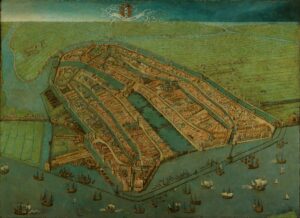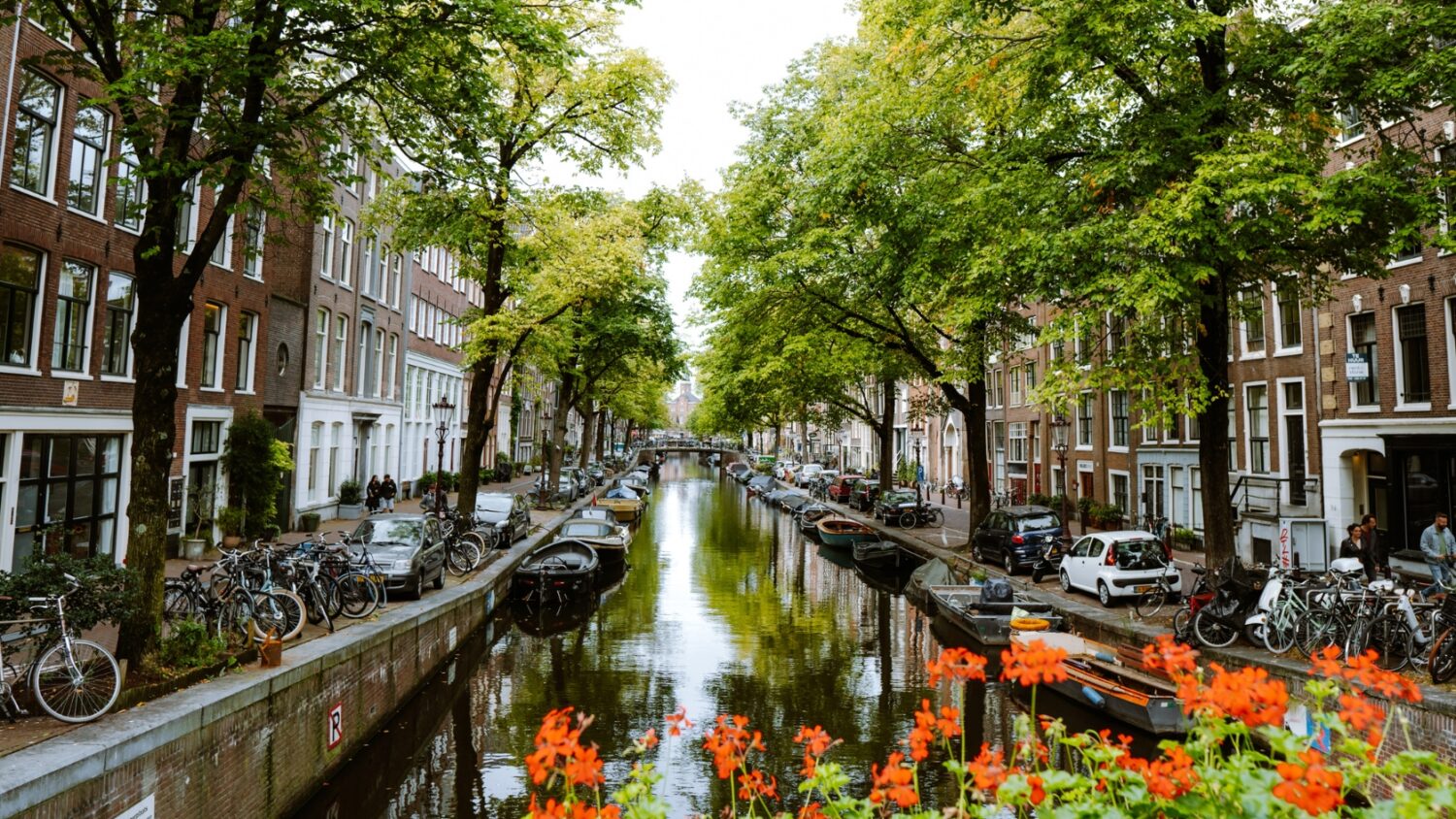Amsterdam began as a modest fishing village along the Amstel River in the 12th century, but its location at the edge of the Zuiderzee soon turned it into a thriving trading hub. By the 17th century, the Golden Age had transformed Amsterdam into one of the world’s great centers of commerce, science, and art. Its canals, warehouses, and merchant houses became symbols of ambition and wealth, while masterpieces by Rembrandt and Vermeer captured the spirit of the era.

Amsterdam as village in 1538 by Cornelis Anthoniszoon
Yet the city’s story is not only one of prosperity. It is also marked by hardship, resilience, and reflection. During the Second World War, the Dutch Resistance fought in the shadows, and the diary of Anne Frank gave the world a personal glimpse into life under persecution. The Jewish quarter, hidden courtyards, and centuries-old churches still carry the weight of these memories.

Photo from the archives: Jewish Amsterdammers held at gunpoint at Jonas Daniël Meijerplein in Amsterdam.
Amsterdam has also been a pioneer: home to the world’s first stock exchange, a testing ground for religious tolerance, and a stage for social and cultural change that continues to inspire. Its history is one of contrasts—wealth and struggle, tolerance and conflict, innovation and tradition—all woven together in the streets and waterways of the city.
With Roods, you don’t just see the surface, you uncover these hidden stories and explore the entire city in your own way, guided by the voices of its past.


